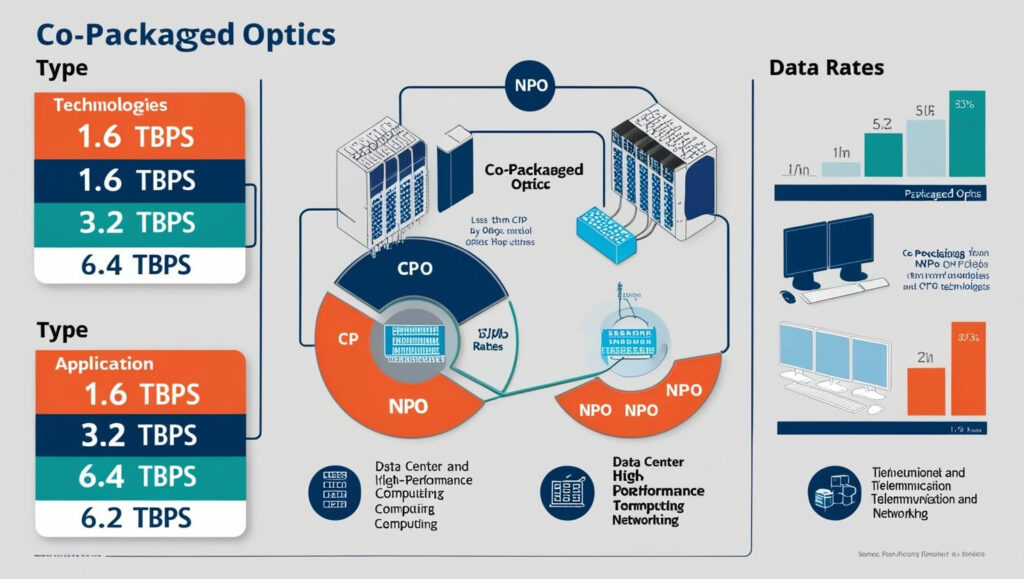The co-packaged optics (CPO) market is on the verge of significant growth, with industry forecasts estimating it will reach $49 million by 2028. As demand for higher bandwidth, lower latency, and energy-efficient data transmission continues to surge, data centers, telecom networks, and AI-driven computing infrastructures are driving the adoption of this advanced optical integration technology.
Download PDF Brochure @ https://www.marketsandmarkets.com/pdfdownloadNew.asp?id=28874835

What is Co-Packaged Optics (CPO)?
Co-packaged optics is a cutting-edge technology that integrates optical components directly with electrical chips, reducing power consumption and enhancing data transmission speeds. Unlike traditional pluggable optics, where optical transceivers are separate from the main switch ASIC, CPO integrates them within the same package, offering better performance, lower energy costs, and reduced latency.
Market Growth Drivers
Several factors are propelling the rapid growth of the co-packaged optics market:
1. Growing Demand for High-Speed Data Transmission
With the rise of cloud computing, AI, 5G, and the Internet of Things (IoT), data centers need faster, more efficient data transfer solutions. Co-packaged optics offer higher bandwidth density while reducing power consumption, making them an ideal solution for next-generation computing infrastructure.
2. Energy Efficiency Concerns in Data Centers
Traditional optical transceivers consume significant amounts of power, contributing to rising operational costs for data centers. CPO helps address this challenge by lowering power requirements by up to 30%, which is crucial for sustainable, cost-effective data center operations.
3. Growing Investments in AI and Machine Learning Workloads
AI and machine learning applications demand high-speed data processing, which requires improved network architectures. Co-packaged optics technology enables low-latency, high-bandwidth connectivity, making it a critical component for AI-driven workloads in data centers.
4. Advancements in Silicon Photonics Technology
Silicon photonics has played a major role in advancing co-packaged optics. By integrating photonic components on a silicon chip, manufacturers can create compact, high-performance optical modules that are scalable and cost-effective.
Market Challenges
Despite its potential, the co-packaged optics market faces several challenges:
- High Initial Costs: Integrating optical components with ASICs requires significant R&D investment, making adoption a costly process.
- Complex Manufacturing Process: CPO technology requires precise engineering to ensure seamless integration and performance reliability.
- Industry Adoption Barriers: Many data centers and network operators still rely on traditional pluggable optics. The transition to CPO requires infrastructure upgrades, which may slow down widespread adoption.
Key Players and Industry Developments
Leading technology companies and semiconductor manufacturers are actively investing in co-packaged optics. Some of the notable players in this space include:
- Broadcom – A leader in optical and networking solutions, developing high-speed CPO modules.
- Intel – Focused on silicon photonics-based co-packaged optics for data centers.
- Cisco – Innovating in next-gen optical interconnects to enhance networking infrastructure.
- Ranovus – Specializing in energy-efficient optical interconnects for high-performance computing.
Regional Insights
North America is expected to dominate the co-packaged optics market, driven by major data center investments from companies like Amazon Web Services (AWS), Google Cloud, and Microsoft Azure. The Asia-Pacific region is also witnessing rapid growth, with China, Japan, and South Korea investing heavily in 5G networks and AI-powered data centers.
Future Outlook
By 2028, co-packaged optics technology will become a key enabler for next-generation data centers and telecom infrastructure. As network demands continue to rise, CPO adoption will accelerate, leading to further technological advancements and cost reductions.
With a projected market size of $49 million by 2028, co-packaged optics is set to revolutionize high-speed networking. As data demands increase, energy efficiency becomes critical, and AI workloads expand, CPO will play an essential role in shaping the future of data centers, cloud computing, and next-generation networks.